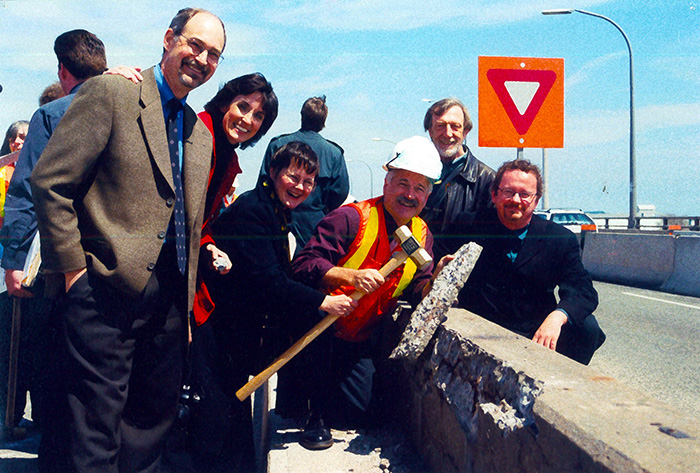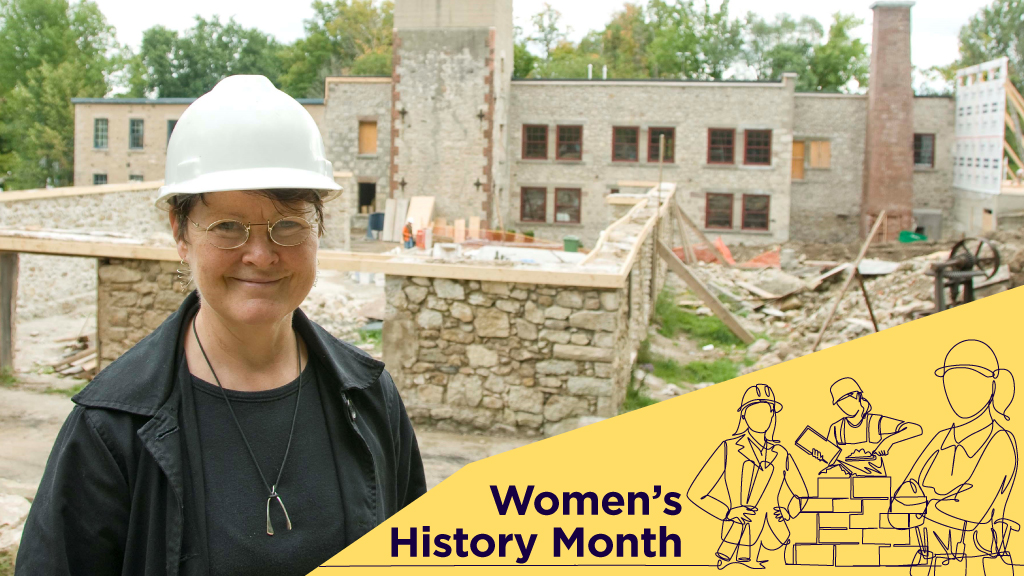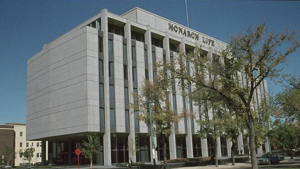The winner of the 2023 Architectural Conservancy Ontario (ACO) lifetime achievement award has been fighting good fights on behalf of the Ontario architectural heritage conservation movement for over 40 years.
Catherine Nasmith has been chair of the Toronto Preservation Board, board member of Heritage Toronto and Heritage Canada, past vice-president of the Toronto Society of Architects and founding member of Friends of Fort York and the Main Streets Advocacy Group.
Successful campaigns Nasmith has been integrally involved with have included bids to strengthen the Ontario Heritage Act, tear down the East Gardiner, derail the Front Street extension over Fort York and preserve public sightlines to Queen’s Park.
Even as a young architecture student in Toronto, she walked the streets erecting posters to protest the proposed destruction of the Don Jail.
“Bringing down the Gardiner was massive,” Nasmith said.
She chuckled when recalling countless hours fighting city hall over the years, working with local citizens and city activists.

“The groups that have lasted the longest don’t meet in committee rooms, they meet in bars and they’re social,” she said. “That kind of organizing I learned from Jack Layton and John Sewell, you know, how to bring together a group to work on something together and just meet and meet and meet until you solve it. And out of that, you build this huge network of people you can call on for advice.”
Her firm, Catherine Nasmith Architect, is a sole proprietorship specializing in heritage rehabilitation, planning and advocacy.
During a career in Canadian urbanism, Nasmith has spearheaded projects such as the adaptive reuse of the Alton Mill and prepared numerous heritage conservation studies for precincts such as Harbord Village, Port Dalhousie, Riverdale, Fort York and Madison Avenue.
The ACO’s Eric Arthur Lifetime Achievement Award citation noted Nasmith served the ACO in both Toronto and Muskoka; that she was a founder of the Doors Open Toronto program; and that she has been active as a mentor, educator and writer, having published the Built Heritage News for 20 years and written numerous articles.
Sad to say, according to Nasmith, city-building for the public good has experienced a decline since about 1967.
“Certainly the idea of building and making lasting legacies for society and for the greater public is a really great thing, and I think Canada had its zenith in that regard in the centennial years,” she said. “A lot of the last 30 or 40 years we’ve been dealing with a culture where ‘less is less.’
“The last 50 years…it’s been much more about just temporary stuff and buildings that have a very, very short lifespan.”
But at a time when many progressives call for the Gardiner Expressway to be torn down, Nasmith counts herself a fan, especially when there is no alternative to moving those commuters currently in sight.
“It actually provides a pretty great entrance to the city,” she said. “Driving towards the downtown, it’s really breathtaking, particularly at night and coming from the west.”
A more recent Nasmith campaign has been to reform regulations on demolition. She would like to see a 60-day wait period on all demolition jobs, for environmental and heritage reasons.
“‘Abolish the right to demolish.’ I wrote that one too,” said Nasmith. “What I am saying is that whether or not something has historic value or heritage value, it has material value. There is material incorporated with the structure and we should be looking to do everything we can to preserve the material that we’ve already extracted from the earth. And the easiest way to do that is preserve if possible the structures.”
The best crusades, Nasmith said, are when the grassroots of a community gets heavily involved.
These days the city initiates most heritage research but back when she was working for the Harbord Village residents association, the locals became heavily involved in the city-building exercise.
“In researching the properties around them they just fell in love with their neighbourhoods, and they learned things about the place that they live in that they would never have known otherwise. And its history and value, and the people who lived there before them. So there’s this huge kind of community pride and cohesiveness that comes out.”
Follow the author on Twitter @DonWall_DCN.







Recent Comments
comments for this post are closed